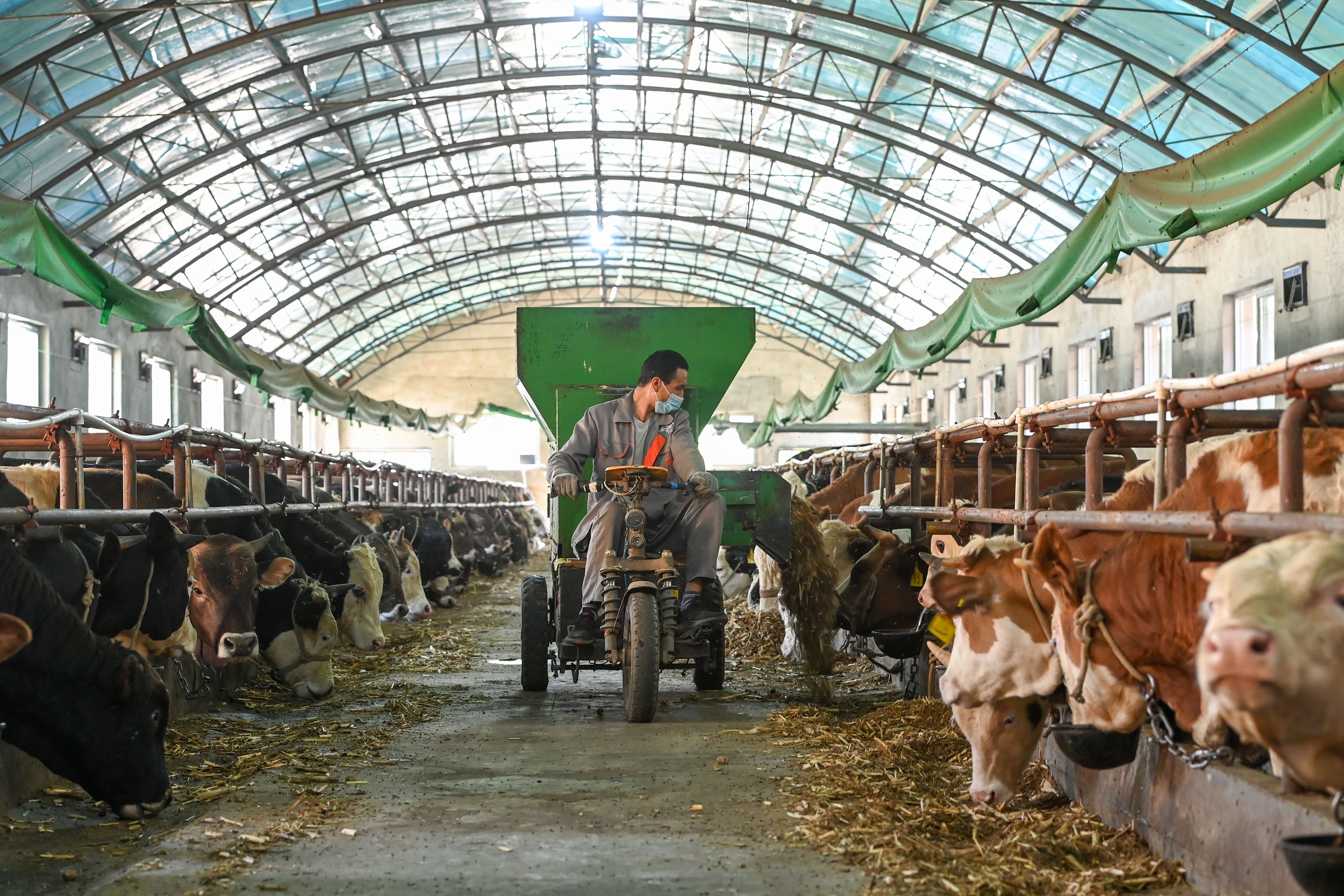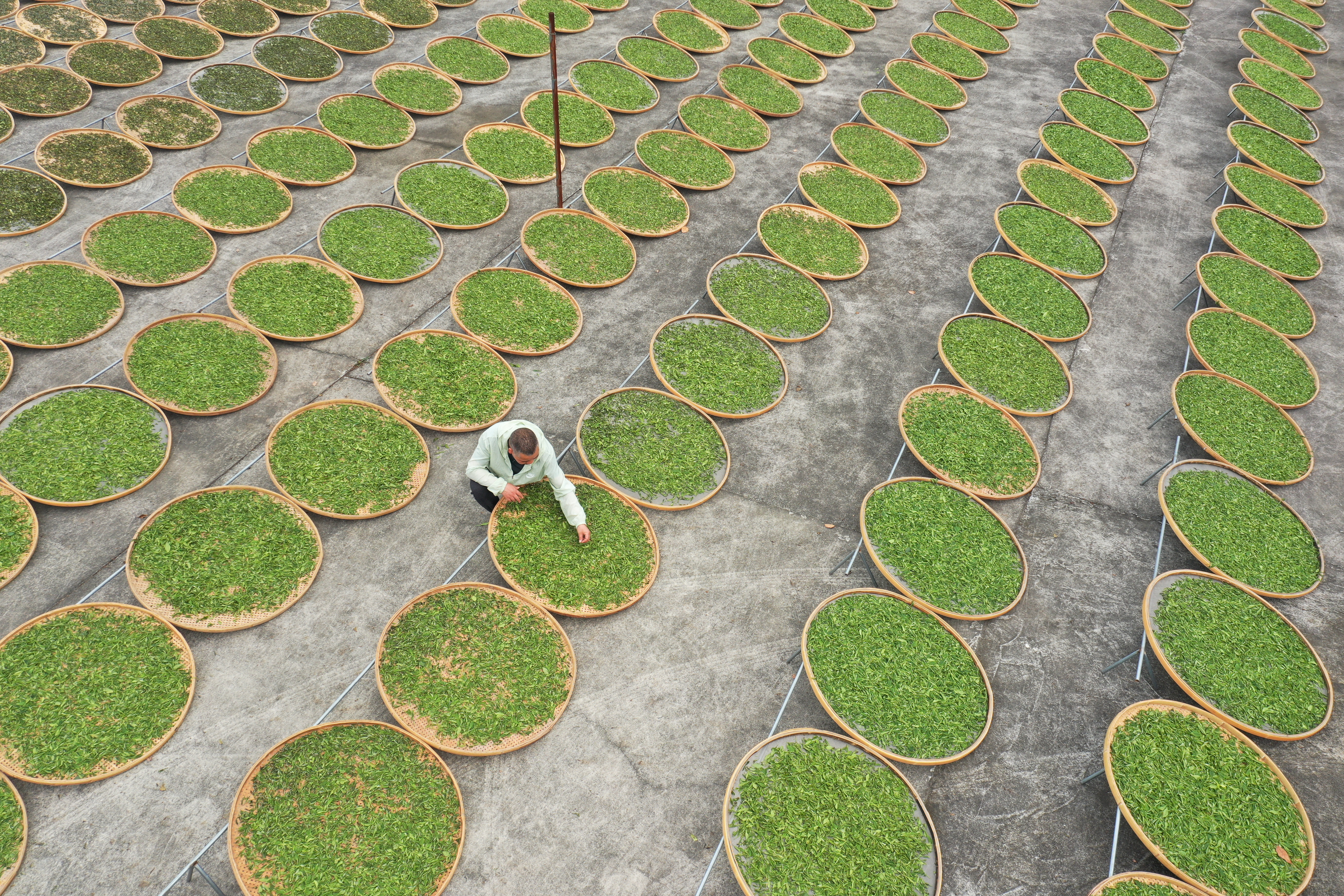Xinjiang Livestock Get New Tech Injection
A man drives an electric feeder to feed cattle at a family farm in Xinjiang's Yining county. (PHOTO: XINHUA)
By Staff Reporters
As a local custom, seven million heads of livestock in the Xinjiang Uygur Autonomous Region have recently begun their annual migration to spring pastures.
Now, to assist with development, the traditional animal husbandry industry in Xinjiang is seeking the help of science and technology.
Leveraging the Internet of Things, cloud computing, and other technologies, the Tianlai Beef Cattle Breeding Base in Xinjiang has set up an intelligent breeding management system, where the number of prime beef cattle increases by 20-30 percent each year.
Technology not only makes the livestock farming industry more efficient, but also extends its industrial chain.
One example is in Altay, where the locally developed physical sterilization method of biofilter helps keep camel milk fresh. With this method, the active nutrients in camel milk are retained, and the shelf life of camel milk is extended from less than seven days to six months. The per capita income of farmers is increased by more than 6,000 RMB each year.
The animal hair rapid detector is another area that has been developed and promoted by Xinjiang Academy of Animal Sciences.
It can complete the detection of the fineness, length, and net cashmere rate of the hair in 10 seconds, which previously took 3-5 days. The finer cashmere extracted by the machine can be processed into high-end textile products with higher value.
At present, Xinjiang has established a circular economy industrial chain and a digitalized supervision system, which can trace the whole process of animal breeding, epidemic prevention, product processing, and marketing, laying a solid foundation for sustainable development of livestock farming in the region.



